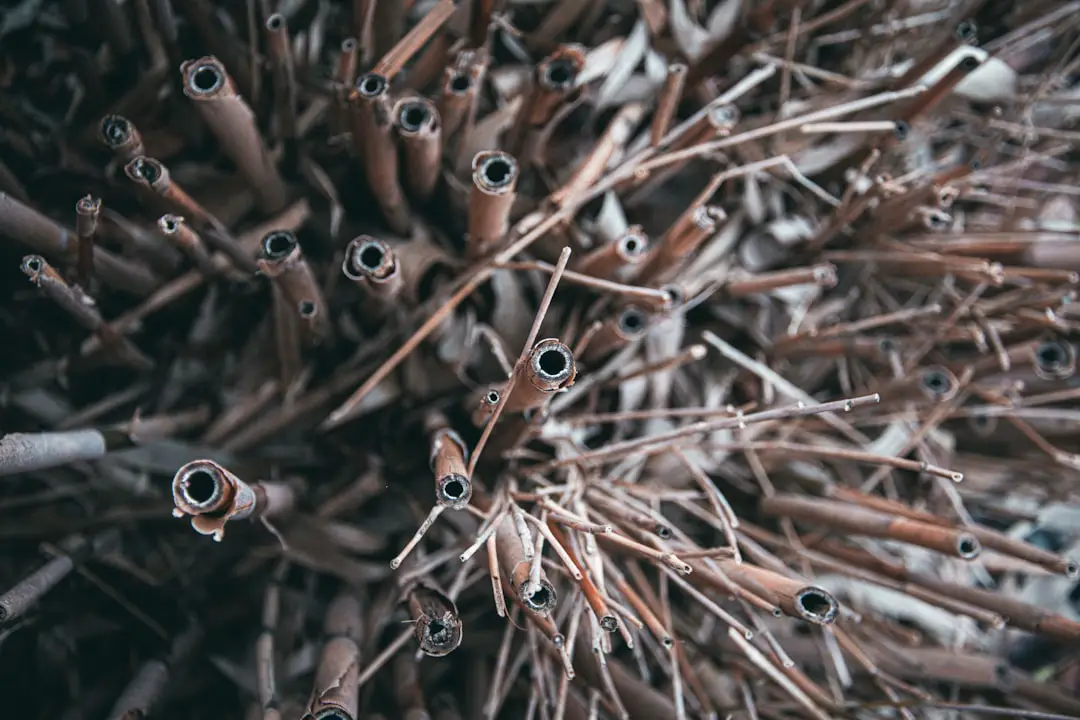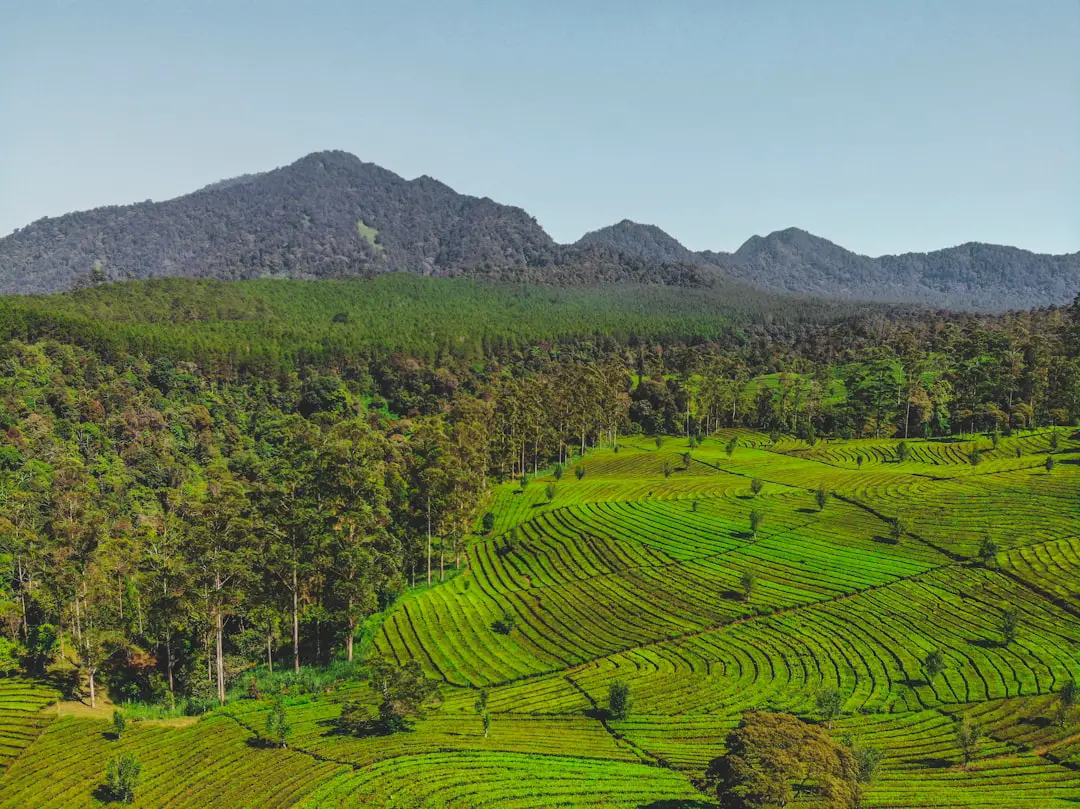Support our educational content for free when you purchase through links on our site. Learn more
Top 10 Tea Producing Countries in Asia [2024] 🍵

Did you know that Asia is home to some of the largest tea-producing countries in the world? Tea cultivation has a rich history in this region, with each country offering its unique flavors and varieties. In this article, we’ll take you on a journey through the top 10 tea-producing countries in Asia, exploring their tea traditions, production techniques, and the teas they are famous for. So grab a cup of your favorite tea and let’s dive in!
Quick Answer
- China: The birthplace of tea and the largest tea producer in the world.
- India: Known for its diverse tea varieties, including Darjeeling and Assam.
- Sri Lanka: Famous for its Ceylon tea, known for its bright and flavorful brew.
- Japan: Renowned for its green teas, such as matcha and sencha.
- Indonesia: Produces a wide range of teas, including black, green, and oolong.
- Vietnam: Known for its unique lotus tea and robust black teas.
- Turkey: Famous for its strong black tea, often served in tulip-shaped glasses.
- Iran: Produces a significant amount of tea, mainly consumed domestically.
- Bangladesh: Known for its tea gardens and the production of black and green teas.
- Nepal: Emerging as a quality tea producer, specializing in organic teas.
Quick Tips and Facts
- China is the largest tea producer in the world, accounting for around 40% of global tea production.
- India is the second-largest tea producer, with a long history of tea cultivation dating back to the British colonial era.
- Sri Lanka, formerly known as Ceylon, is renowned for its high-quality black teas.
- Japan is famous for its traditional tea ceremonies and the production of premium green teas.
- Indonesia is the world’s fourth-largest tea producer, offering a wide range of tea varieties.
- Vietnam is known for its unique lotus tea, where tea leaves are infused with the fragrance of lotus flowers.
- Turkey has a strong tea culture, with black tea being a staple in Turkish households.
- Iran produces a significant amount of tea, primarily consumed domestically.
- Bangladesh is known for its tea gardens, producing both black and green teas.
- Nepal is emerging as a quality tea producer, focusing on organic teas.
Background: Tea Production in Asia

Tea production has a long and storied history in Asia. The continent is home to some of the oldest tea-growing regions, where tea has been cultivated for centuries. The favorable climate, rich soil, and traditional cultivation techniques have made Asia the powerhouse of the global tea industry.
Tea cultivation in Asia dates back thousands of years, with China being the birthplace of tea. Legend has it that Emperor Shen Nong discovered tea when a tea leaf accidentally fell into his boiling water. Since then, tea has become an integral part of Chinese culture and has spread to other Asian countries.
Over time, tea production techniques have evolved, and different countries have developed their unique tea varieties and processing methods. Let’s explore the top 10 tea-producing countries in Asia and discover the teas they are famous for.
1. China: The Tea Pioneer 🇨🇳
China, the birthplace of tea, takes the crown as the largest tea producer in the world. With a history spanning thousands of years, China has perfected the art of tea cultivation and processing. The country’s diverse climate and topography contribute to the wide range of teas it produces.
China is known for its famous tea regions, including Yunnan, Guangdong, and Zhejiang provinces. Each region specializes in different types of tea, such as green, black, white, oolong, and pu-erh. Some of the most popular Chinese teas include Longjing (Dragon Well), Tie Guan Yin (Iron Goddess of Mercy), and Da Hong Pao (Big Red Robe).
China’s tea production techniques have been passed down through generations, ensuring the preservation of traditional methods. The country’s tea culture is deeply ingrained in everyday life, with tea being served during social gatherings, ceremonies, and as a sign of hospitality.
If you’re looking to explore the world of Chinese tea, we recommend trying a variety of teas from different regions to experience the rich diversity of flavors and aromas.
2. India: The Land of Assam and Darjeeling 🇮🇳
India, the second-largest tea producer in the world, has a tea industry that dates back over 100 years. The country’s tea cultivation began during the British colonial era, and it has since become an integral part of Indian culture and economy.
India is known for its diverse tea varieties, with the regions of Assam, Darjeeling, and Nilgiri being the most famous. Assam tea, grown in the northeastern state of Assam, is known for its robust and malty flavor, making it a popular choice for breakfast teas. Darjeeling tea, grown in the foothills of the Himalayas, is prized for its delicate and floral notes, often referred to as the “Champagne of Teas.” Nilgiri tea, grown in the southern state of Tamil Nadu, offers a smooth and mellow brew.
The tea gardens of India are not only known for their exceptional teas but also for their scenic beauty. Many tea estates in Darjeeling and Assam offer breathtaking views of rolling hills covered in tea bushes, making them popular tourist destinations.
Whether you prefer a strong cup of Assam tea or a delicate Darjeeling brew, Indian teas are sure to delight your taste buds.
3. Sri Lanka: The Land of Ceylon Tea 🇱🇰
Sri Lanka, formerly known as Ceylon, is renowned for its high-quality black teas. The country’s tea industry was established during the British colonial era, and it has since become one of the top tea-producing countries in the world.
Ceylon tea is known for its bright and flavorful brew, with a range of flavors and aromas depending on the elevation and region of cultivation. The central mountains of Sri Lanka, including the districts of Nuwara Eliya and Dimbula, produce some of the finest Ceylon teas. These teas are prized for their briskness, brightness, and well-balanced flavors.
Sri Lanka’s tea industry is deeply rooted in its culture and economy. The country celebrates its tea heritage with events like the Colombo Tea Auction, where buyers from around the world bid on the finest Ceylon teas.
If you’re a fan of black teas, don’t miss the opportunity to savor the exquisite flavors of Ceylon tea.
4. Japan: The Land of Green Tea 🇯🇵
Japan is famous for its green teas, known for their vibrant green color, fresh flavors, and health benefits. The country’s tea culture is deeply ingrained in its history and traditions, with tea ceremonies being an integral part of Japanese life.
The most famous Japanese green teas include matcha, sencha, and genmaicha. Matcha, a powdered green tea, is used in traditional tea ceremonies and has gained popularity worldwide for its unique flavor and health benefits. Sencha, the most commonly consumed green tea in Japan, offers a refreshing and grassy taste. Genmaicha, also known as “popcorn tea,” is a blend of green tea and roasted brown rice, resulting in a nutty and toasty flavor.
Japan’s tea production is characterized by meticulous cultivation and processing techniques. The tea leaves are carefully shaded before harvest to enhance their flavor and aroma. The leaves are then steamed, rolled, and dried to preserve their vibrant green color and fresh taste.
If you’re a fan of green teas or want to experience the tranquility of a traditional Japanese tea ceremony, be sure to explore the world of Japanese teas.
5. Indonesia: A Tapestry of Tea Flavors 🇮🇩
Indonesia is the world’s fourth-largest tea producer, offering a wide range of tea varieties. The country’s tea industry is diverse, with different regions specializing in different types of teas, including black, green, and oolong.
Some of the famous Indonesian teas include Indonesian black tea, known for its robust and full-bodied flavor, and Gunpowder green tea, characterized by its tightly rolled leaves. Jasmine tea, a fragrant blend of green tea and jasmine flowers, is also popular in Indonesia.
Indonesia’s tea production is influenced by its unique climate and volcanic soil, which contribute to the distinct flavors and aromas of its teas. The country’s tea gardens are often nestled amidst breathtaking landscapes, offering a serene environment for tea cultivation.
If you’re looking to explore the diverse flavors of Indonesian teas, be sure to try a cup of their black tea or the fragrant jasmine tea.
6. Vietnam: Lotus Tea and Robust Black Teas 🇻🇳
Vietnam is known for its unique lotus tea, where tea leaves are infused with the fragrance of lotus flowers. This traditional tea-making process results in a delicate and aromatic brew, highly prized by tea connoisseurs.
In addition to lotus tea, Vietnam is also a major producer of robust black teas. The country’s black teas are known for their bold flavors and rich aromas, making them a favorite choice for those who prefer a stronger cup of tea.
Vietnam’s tea production is centered around the northern highlands, where the cool climate and fertile soil create ideal conditions for tea cultivation. The country’s tea gardens offer stunning views of terraced fields, adding to the allure of Vietnamese teas.
If you’re looking for a unique tea experience, don’t miss the opportunity to try Vietnam’s lotus tea or indulge in the bold flavors of their black teas.
7. Turkey: The Land of Strong Black Tea 🇹🇷
Turkey has a strong tea culture, with black tea being a staple in Turkish households. Turkish tea, known as “çay,” is typically brewed strong and served in tulip-shaped glasses. It is often enjoyed throughout the day, with tea breaks being an essential part of Turkish social life.
The tea gardens of Turkey are primarily located in the lush and mountainous regions along the Black Sea coast. The unique climate and fertile soil contribute to the rich flavors and vibrant colors of Turkish teas.
Turkish tea is traditionally brewed using a double teapot called a “çaydanlık.” The lower pot is filled with boiling water, while the upper pot holds loose tea leaves. The brewed tea is then diluted with hot water from the lower pot to achieve the desired strength.
If you want to experience the warmth of Turkish hospitality, be sure to savor a cup of strong Turkish tea.
8. Iran: A Tea Tradition from the Caspian Sea 🇮🇷
Iran has a long-standing tea tradition, with tea being an integral part of Iranian culture and daily life. The country’s tea production is centered around the Caspian Sea region of Gilan, where the climate and soil conditions are ideal for tea cultivation.
Iran primarily produces black tea, which is consumed in large quantities domestically. Iranian tea is known for its rich and robust flavor, often enjoyed with sugar cubes or a squeeze of lemon.
Tea plays a significant role in Iranian social gatherings, where it is served alongside traditional sweets and pastries. The Iranian tea culture is characterized by its hospitality and the importance placed on tea as a symbol of friendship and warmth.
If you’re curious about Iranian tea, be sure to experience the rich flavors and warm hospitality of this tea-loving nation.
9. Bangladesh: Tea Gardens and Quality Teas 🇧🇩
Bangladesh is known for its tea gardens, which dot the picturesque landscapes of the country. The tea industry in Bangladesh has a rich history, with tea cultivation dating back to the British colonial era.
The country produces both black and green teas, with the Sylhet and Chittagong regions being the primary tea-growing areas. Bangladeshi teas are known for their unique flavors and aromas, influenced by the country’s climate and soil conditions.
Tea is an integral part of Bangladeshi culture, often served during social gatherings and as a gesture of hospitality. The country’s tea gardens offer a serene environment for tea lovers to explore the world of Bangladeshi teas.
If you’re looking for quality teas with distinct flavors, be sure to try the teas from the tea gardens of Bangladesh.
10. Nepal: Emerging as a Quality Tea Producer 🇳🇵
Nepal is emerging as a quality tea producer, specializing in organic teas. The country’s tea industry is relatively young but has gained recognition for its unique flavors and high-quality teas.
Nepal’s tea gardens are located in the foothills of the Himalayas, where the cool climate and fertile soil create ideal conditions for tea cultivation. The country’s organic tea production has gained popularity among tea enthusiasts who value sustainability and natural farming practices.
Nepalese teas are known for their delicate flavors and floral aromas, often compared to the teas of neighboring Darjeeling. The country’s tea industry is steadily growing, with tea gardens focusing on producing teas that meet international standards of quality.
If you’re looking to explore the teas of Nepal, be sure to try their organic offerings and experience the flavors of the Himalayas.
Conclusion

Asia is a treasure trove of tea-producing countries, each offering its unique flavors, traditions, and tea varieties. From the birthplace of tea in China to the lush tea gardens of Sri Lanka and the delicate flavors of Japanese green teas, there’s a world of tea waiting to be explored.
Whether you’re a fan of robust black teas, fragrant green teas, or unique tea blends, Asia has something to offer every tea lover. So, grab your favorite tea cup, embark on a tea-tasting journey, and discover the rich tapestry of flavors that Asia has to offer.
Remember, tea is not just a beverage; it’s a cultural experience that connects people and brings warmth to our lives. So, take a moment to savor the flavors, appreciate the craftsmanship, and enjoy the tranquility that a cup of tea brings.
Cheers to the world of tea and the countries that bring it to life!
FAQs

Which country is the largest producer of tea in Asia?
China is the largest tea producer in Asia and the world. It accounts for around 40% of global tea production.
What are the top 10 tea-producing countries in Asia?
The top 10 tea-producing countries in Asia are:
- China
- India
- Sri Lanka
- Japan
- Indonesia
- Vietnam
- Turkey
- Iran
- Bangladesh
- Nepal
What is China’s rank in the world in tea production?
China is the largest tea producer in the world, accounting for approximately 40% of global tea production.
Read more about “Which Country Produces the Best Quality Tea in the World … 🍵”
Which country has the best tea in the world?
The concept of “best tea” is subjective and varies from person to person. Each tea-producing country has its unique flavors and tea varieties, making it difficult to determine a single country with the best tea. It ultimately comes down to personal preference and the type of tea you enjoy.
Read more about “The Most Popular Tea Brand in America … 🍵”
Recommended Links
- Green Tea Cultivation
- Herbal Tea Planting
- Tea Plant Varieties
- Soil and Climate for Tea
- Tea Market Trends
- Where Does the US Get Its Tea? 2024 🍵



